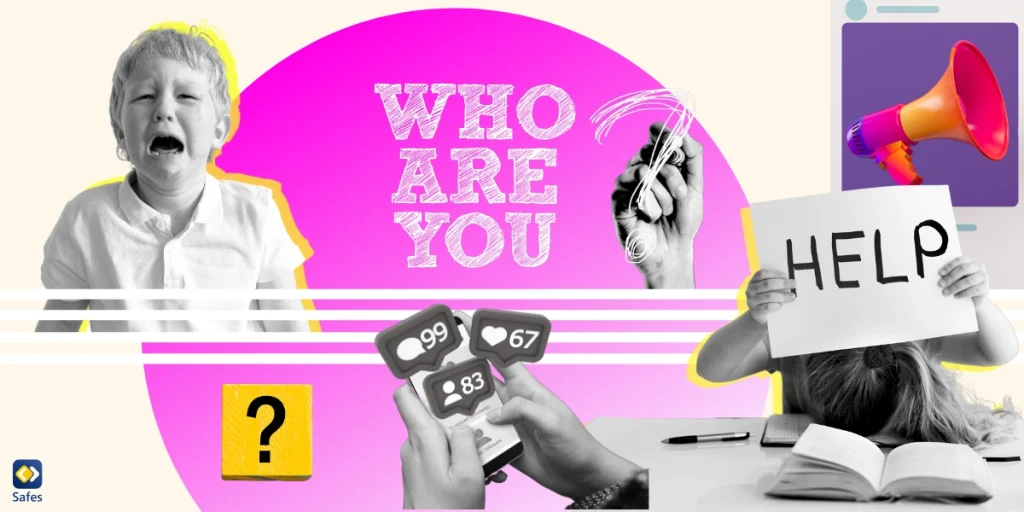The average teenager spends 7 hours and 22 minutes on their phone, daily. A lot of this time is spent scrolling through social media and text messaging. One branch of texting is sexting. Sexting refers to the exchange of sexually explicit messages, images, or videos using digital devices. This can include nudity, discussions of sexual activities, or the creation of content that imitates sexual acts. A study done by JAMA Pediatrics in 2018 showed that 28% of teenagers between 12 and 17 years have received a sexually explicit text, while 15% have sent a sexually explicit text (sext). A more worrying finding is that one in 10 teens have forwarded a suggestive text without the consent of the sender. Sexting has plenty of consequences, such as legal issues, regret, emotional damage, and academic or professional repercussions. These statistics and consequences should warn parents to act and prevent sexting in teens. In this blog, we’re going to give you seven effective ways to prevent sexting in your teens.
Download and Start Your Free Trial of the Safes Parental Control App
What Can Parents Do?
Preventing teens from sexting requires a combination of education, communication, and setting clear boundaries. To learn more about how to stop sexting we have collected some effective ways to help prevent teens from engaging in sexting:
Start the Conversation
Encourage open and non-judgmental conversations with your teens about the dangers of sexting, even when you think your child hasn’t come across it yet. Break the taboo by starting to educate them about what sexting is and tell them that they can talk to you about their concerns and experiences. A possible start on the topic could be an example of this teenage daughter sending inappropriate pictures. Keep in mind to talk about the dangers of both sides: both the sender and the receiver might face the consequences of sexting.
Educate About the Consequences
Talk about the consequences of sexting with your teen, we’ve listed some of them to get you started:
- Legal Ramifications of Sexting: Sending, receiving, or possessing explicit pictures or videos of minors (even if the person sending the nude photos or videos is also a minor) can lead to serious legal consequences, including charges of child pornography.
- Academic Reputation: Schools may take disciplinary actions against students involved in sexting if it disrupts the school environment or violates school policies.
- Professional Reputation: If your teen has a side job, public sexting incidents or exploitation by employers can result in job loss or damage to one’s professional reputation.
- Privacy Violation: Once a sext message or image is sent, it’s quite impossible to control who sees it. The loss of privacy can lead to feelings of humiliation and distress.
- Relationship Issues: Sexting can lead to misunderstandings, jealousy, or trust issues within relationships. If the sexted content is shared with others, it can damage reputations and relationships.
- Emotional Distress: Individuals involved in sexting may experience emotional distress, guilt, shame, or regret. Incidents that become public can result in peers bullying or ignoring your teen, which only makes matters worse.

Teach Digital Etiquette and Respect
In the effort to prevent sexting among teens, it’s vital to stress the importance of respecting others’ boundaries and consent in digital interactions. This foundational principle helps them understand that just as in face-to-face interactions, obtaining consent and respecting personal boundaries are non-negotiable aspects of any healthy relationship, whether online or offline.
Guiding and teaching teens about healthy relationships and respectful communication is essential. This education should encompass recognizing signs of healthy relationships, fostering open and honest dialogues, and teaching them how to express their feelings and concerns constructively. When teens understand what constitutes a healthy connection, they are better equipped to navigate the complexities of digital interactions and make responsible choices.
Empathy and understanding also play a crucial role in preventing sexting incidents. Encouraging teens to consider the feelings and perspectives of others in their online interactions helps them develop empathy. When they can empathize with the potential consequences of their actions, such as the emotional distress caused by sexting without consent, they are more likely to make empathetic and responsible choices, ultimately contributing to a safer digital environment for everyone involved.
Set Clear Expectations and Boundaries
Setting clear expectations and boundaries is crucial when it comes to guiding your children’s cell phone and internet use. By discussing the significance of these rules openly, you empower them with an understanding of responsible digital behavior. To establish effective boundaries, it’s crucial to offer practical advice tailored to their age and maturity level. Differentiating between age-appropriate limits for social media, texting, and online interactions ensures that their online experiences align with their developmental stage.
Monitor Online Activity
By monitoring your teens’ online activity, you can be aware of the dangers they are facing online. Utilizing parental control apps can be a valuable tool to enforce these boundaries, providing parents with the means to monitor the amount of time spent online, restrict access to inappropriate content, and track their children’s activities on social media platforms. This can be especially helpful in the case of teen sexting, for example, if you have a teenage daughter sending inappropriate pictures. One parental control app you can use for this purpose is Safes. Safes offers all the needed features to keep your child safe online. Whether you’re using an Android or iOS device, Safes helps you to set appropriate limits on screen time, harmful apps, and inappropriate content. Secure your child’s digital world today with a risk-free free trial of Safes! Sign up now to explore advanced parental control features and provide a safer online experience. Join us on the journey to digital safety – start your trial today!
To help parents navigate online safety challenges, we’ve also compiled a comprehensive guide on setting up default parental controls across various devices. Whether you’re using Android, iPhone, Mac, or Windows, our step-by-step resources will empower you to create a safer digital environment for your family. Click on the links below to access tailored instructions for each device
- Windows parental controls
- Macbook parental controls
- Parental controls on android
- iPhone parental controls
Empower Teens to Respond Appropriately
Empowering teens to navigate the challenging terrain of peer pressure related to sexting requests is essential. Openly discussing strategies for handling such situations equips them with the tools they need to make responsible choices. Encourage them to respond assertively, firmly asserting their boundaries, and making it clear when they are uncomfortable with sending sexually explicit texts. Stress the importance of reporting inappropriate behavior to the authorities or platforms to prevent further harm. Additionally, remind teens that seeking professional help or help from trusted adults, such as parents, teachers, or counselors, is not a sign of weakness but a responsible course of action when faced with digital coercion. By fostering assertiveness, reporting mechanisms, and open communication, we encourage teens to be responsible digital citizens who prioritize their own well-being and that of their peers in an online world often fraught with challenges.
Foster Offline Connections
Emphasizing the significance of maintaining a balance between digital interactions and real-life connections is crucial. Spending quality time offline with your teens can help reduce their excessive online presence. Engaging in activities like watching funny movies together, encouraging them to partake in mental health activities, or collaborating on DIY activities can strengthen your parent-child bond. A strong bond fosters trust, making it more likely that your children will confide in you when they have concerns, ultimately reducing their inclination toward risky online behavior.

Remember that preventing sexting requires ongoing conversations and support. Be patient and understanding while guiding your teens to make responsible choices in the digital age.
Conclusion
In summary, the blog focuses on how to stop sexting in teenagers by empowering essential strategies. It underscores the alarming statistics associated with sexting and the potential consequences, both legal and emotional. The blog advises parents to initiate open conversations about sexting, educate their teens about the risks, and promote digital etiquette, respect, and empathy. Setting clear boundaries, monitoring online activity, and empowering teens to respond assertively to peer pressure are crucial steps to help children explore their sexuality in healthier ways. Lastly, the blog emphasizes the importance of nurturing offline connections to strike a balance between digital and real-life relationships, creating a safer digital environment for teenagers.
Your Child’s Online Safety Starts Here
Every parent today needs a solution to manage screen time and keep their child safe online.
Without the right tools, digital risks and excessive screen time can impact children's well-being. Safes helps parents set healthy boundaries, monitor activity, and protect kids from online dangers—all with an easy-to-use app.
Take control of your child’s digital world. Learn more about Safes or download the app to start your free trial today!




